Centella Asiatica Extract: Premium Standardized Ingredient for Pharma, Cosmetics & Nutraceuticals
1. What is Centella Asiatica Extract?
Centella Asiatica Extract, derived from the Centella asiatica (L.) Urb. plant (commonly known as Gotu Kola or Cica), is a concentrated source of bioactive triterpenoid compounds. These compounds, primarily asiaticoside, madecassoside, asiatic acid, and madecassic acid, are responsible for its extensive therapeutic and cosmetic applications. Standardized extracts guarantee consistent levels of these key actives, crucial for efficacy in industrial applications.
2. Source, Chemical Properties & Identifiers
-
Botanical Source: Centella asiatica (L.) Urb. (Apiaceae family). Aerial parts (leaves and stems).
-
Key Active Constituents: Triterpenoid saponins (Centellosides) – Asiaticoside, Madecassoside; Triterpenic acids – Asiatic acid, Madecassic acid.
-
CAS Number: 84776-10-3 (for the plant extract; specific compounds have individual CAS)
-
Molecular Formula (MF): Varies per compound (e.g., Asiaticoside: C48H78O19)
-
Molecular Weight (MW): Varies per compound (e.g., Asiaticoside: 959.12 g/mol)
-
EINECS: Typically listed under the plant extract or specific dominant compounds.
3. Benefits, Dosage & Safety
-
Skin Benefits (Cosmeceutical Focus):
-
Wound Healing & Tissue Repair: Stimulates collagen synthesis (Types I & III), fibroblast proliferation, and angiogenesis via TGF-β/Smad and PI3K/Akt pathways. Accelerates wound closure post-surgery or injury.
-
Anti-Aging & Anti-Wrinkle: Enhances skin firmness and elasticity by boosting collagen/elastin production and inhibiting MMPs (matrix metalloproteinases).
-
Anti-Inflammatory & Soothing: Potently inhibits pro-inflammatory cytokines (TNF-α, IL-6) and mediators (COX-2, PGE2). Ideal for sensitive, irritated, or post-procedure skin (rosacea, eczema).
-
Antioxidant Protection: Scavenges free radicals (ROS) and boosts endogenous antioxidant enzymes (SOD, GPx), protecting against UV and environmental damage.
-
Stretch Mark & Scar Improvement: Modulates collagen remodeling, improving appearance of hypertrophic scars and striae.
-
-
Systemic Health Benefits (Nutraceutical Focus):
-
Cognitive Support: Enhances cognitive function, memory, and may offer neuroprotection by modulating acetylcholine levels and reducing oxidative stress in the brain (studies on CDP-choline synergy exist).
-
Venous Insufficiency & Microcirculation: Improves venous tone, reduces capillary permeability, and alleviates symptoms of chronic venous insufficiency (CVI) and varicose veins.
-
Anxiolytic & Adaptogenic Potential: Exhibits calming effects, potentially reducing symptoms of anxiety and improving stress resilience.
-
Antifibrotic Activity: Shows promise in modulating excessive collagen deposition in conditions like liver fibrosis.
-
-
Daily Intake & Usage Guidelines:
-
Oral (Nutraceutical): Typical standardized extract doses range from 300 mg to 1000 mg daily, often standardized to 40-70% total triterpenoids. Always follow specific product formulations and consult a healthcare professional.
-
Topical (Cosmetic): Concentrations typically range from 0.1% to 5% in final formulations (creams, serums). Efficacy depends on extract quality, standardization, and delivery system.
-
-
Precautions & Potential Side Effects:
-
Generally well-tolerated. Rare reports of contact dermatitis topically.
-
Oral use: Possible mild GI upset, drowsiness, or headache. High doses may cause hepatotoxicity in sensitive individuals.
-
Contraindications: Pregnancy, breastfeeding (limited safety data), known hypersensitivity. Caution advised in individuals with liver disease or scheduled for surgery (potential sedative effects). May interact with sedatives, diabetes, or cholesterol medications. Consult a physician before use.
-
4. Manufacturer Profile: Shaanxi Zhonghong Investment Technology Co., Ltd.
Shaanxi Zhonghong Investment Technology Co., Ltd. is a vertically integrated, high-tech enterprise specializing in advanced extraction, isolation, and purification of bioactive plant constituents for global markets. With 28 years of expertise in the bioactives sector, the company serves demanding clients in pharmaceuticals, nutraceuticals, cosmeceuticals, and specialty chemicals.
-
Core Competencies: Natural plant extraction (Standardized Botanicals), cosmetic actives, pharmaceutical intermediates, nutraceutical ingredients, natural pigments (anthocyanins, carotenoids), natural sweeteners (mogrosides, steviol glycosides).
-
Scientific Prowess (R&D Barrier): Maintains 5 dedicated university joint laboratories, possesses 20+ proprietary patents, and curates a globally exclusive compound library for novel molecule discovery.
-
Cutting-Edge Infrastructure: Leverages HPLC (High-Performance Liquid Chromatography), NMR (Nuclear Magnetic Resonance Spectroscopy), and other cGMP-compliant analytical instrumentation, achieving purity standards exceeding industry norms by 20%+.
-
Global Supply Chain: Robust distribution network spanning 80+ countries across Asia, Europe, and the Americas. Expert in providing customized, scalable ingredient solutions for multinational pharmaceutical corporations and research institutions.
5. Product Specifications: Rigorous Quality Control
| Category | Item Name | Specification (Limit) | Test Method |
|---|---|---|---|
| Pesticides | Total BHC (α,β,γ,δ) | ≤ 0.2 mg/kg | GC-ECD |
| Total DDT (o,p’ + p,p’) | ≤ 0.2 mg/kg | GC-ECD | |
| Total Parathion | ≤ 0.3 mg/kg | GC-FPD/NPD | |
| Cypermethrin | ≤ 1.0 mg/kg | GC-ECD | |
| Dichlorvos | ≤ 0.5 mg/kg | GC-FPD | |
| Heavy Metals | Lead (Pb) | ≤ 3.0 mg/kg | ICP-MS / AAS |
| Arsenic (As) | ≤ 2.0 mg/kg | ICP-MS / HG-AAS | |
| Cadmium (Cd) | ≤ 1.0 mg/kg | ICP-MS / GF-AAS | |
| Mercury (Hg) | ≤ 0.1 mg/kg | CV-AAS / Mercury Analyzer | |
| Microbiology | Total Plate Count | ≤ 1000 CFU/g | USP <61> / EP 2.6.12 |
| Yeast & Mold | ≤ 100 CFU/g | USP <61> / EP 2.6.12 | |
| E. coli | Negative / 10g | USP <62> / EP 2.6.13 | |
| Salmonella spp. | Negative / 25g | USP <62> / ISO 6579-1 | |
| Staph. aureus | Negative / 1g | USP <62> / EP 2.6.13 | |
| Pseudomonas aeruginosa | Negative / 1g | USP <62> / EP 2.6.13 |
(Note: Specifications may vary based on target application and final customer requirements. Compliant with USP, EP, JP, CP, FDA, and ISO standards.)
6. Advanced Production Process
Zhonghong employs a multi-stage, GMP-compliant process:
-
Sourcing & ID: Premium, sustainably farmed C. asiatica authenticated via macroscopic/microscopic and HPTLC/HPLC methods.
-
Extraction: Optimized solvent extraction (e.g., hydro-ethanolic) under controlled T° & pressure to maximize triterpenoid yield.
-
Primary Purification: Filtration, centrifugation, and adsorption chromatography to remove impurities.
-
Concentration: Low-temperature vacuum evaporation to preserve thermolabile compounds.
-
Standardization: Precise adjustment using HPLC quantification to guarantee specified levels of total triterpenes, asiaticoside, madecassoside, etc.
-
Secondary Purification (Optional): Advanced techniques (e.g., preparative HPLC, crystallization) for high-purity (>95%) single compounds.
-
Drying: Spray drying or freeze-drying (lyophilization) to produce stable powder extracts.
-
Blending & Homogenization: Ensuring batch-to-batch consistency.
-
Comprehensive QC Testing: Mandatory release testing against full specs (Actives, Residual Solvents, Pesticides, Heavy Metals, Microbiology).
7. Key Application Scenarios
-
Cosmetic Actives: Anti-aging serums/creams, wound healing formulations, sensitive skin care, post-procedure recovery products, stretch mark/scar treatments, soothing lotions.
-
Nutraceuticals: Cognitive health supplements, venous support formulas, stress relief complexes, liver health products, antioxidant blends.
-
Pharmaceutical Intermediates: Raw material for wound healing ointments/dressings, investigational drugs for fibrosis or neurodegenerative conditions.
-
Functional Foods & Beverages: Cognitive or circulation-enhancing drinks/bars.
8. Stringent Quality Control (QC)
Zhonghong’s QC paradigm is foundational to its “purity standard exceeding industry by 20%” claim. It encompasses:
-
Incoming Raw Material Inspection: Rigorous ID testing (Botanical, TLC/HPLC fingerprinting), pesticide/heavy metal screening.
-
In-Process Controls (IPC): Monitoring critical parameters (T°, pH, solvent conc., extraction time, intermediate purity via HPLC) at every stage.
-
Stability Studies: Real-time & accelerated (ICH Q1A(R2)) to determine shelf-life, storage conditions, and packaging suitability.
-
Final Product Testing: Full spectrum analysis per predefined specifications: Identity (HPLC fingerprint, TLC), Assay/Potency (HPLC-DAD/ELSD for asiaticoside, madecassoside, total triterpenes), Purity (Residual Solvents – GC, Pesticides – GC-MS/MS, Heavy Metals – ICP-MS, Microbiology – validated compendial methods), Physical Properties (Appearance, Odor, Solubility, Loss on Drying, Particle Size).
-
Documentation & Traceability: Full cGMP documentation (Batch Records, COAs, SOPs) ensuring complete traceability from raw material to finished batch. Audits by global regulatory bodies and major clients are routine. The use of NMR ensures unequivocal structural confirmation of key markers.
9. Packaging & Logistics
-
Primary Packaging: Food-grade polyethylene bags with double HDPE liners, or vacuum-sealed aluminum foil bags. Tamper-evident seals. Options for nitrogen flushing for oxidatively sensitive extracts.
-
Secondary Packaging: Sturdy, fiberboard drums (25kg net) or cartons (1kg, 5kg).
-
Storage: Store in a cool (15-25°C), dry place (<60% RH), protected from light and strong odors.
-
Shelf Life: Typically 24 months from production date when stored properly.
-
Global Logistics: Expertise in handling international shipping regulations (including CITES if applicable for raw herb), customs clearance, and cold chain management if required. Documentation includes COA, MSDS, Certificate of Origin, Phytosanitary Certificate.
10. Health Benefits: Mechanisms & Research
-
Mechanisms of Action:
-
Wound Healing: Triterpenes (asiaticoside, madecassoside) stimulate fibroblast proliferation, collagen/elastin/fibronectin synthesis via TGF-β1/Smad, PI3K/Akt, and MAPK signaling pathways. Enhance angiogenesis and granulation tissue formation.
-
Anti-Inflammation: Inhibits NF-κB translocation, reducing TNF-α, IL-1β, IL-6, COX-2, iNOS, and PGE2 production. Modulates antioxidant enzymes (SOD, CAT, GPx).
-
Neuroprotection: Enhances cholinergic neurotransmission, reduces Aβ toxicity and tau hyperphosphorylation, mitigates oxidative stress and mitochondrial dysfunction. Modulates BDNF and NGF.
-
Venotonic: Improves venous wall tone and reduces capillary hyperpermeability, potentially via endothelial NO modulation and collagen stabilization.
-
-
Industry Applications & Innovation: Beyond standardized extracts (e.g., 40% Triterpenes), Zhonghong focuses on high-purity single compounds (>95% asiatic acid, madecassoside) for pharmaceutical R&D, novel delivery systems (liposomes, nanoemulsions) for enhanced topical bioavailability, and synergistic blends (e.g., with hyaluronic acid, peptides).
-
Research Frontiers & Challenges: Exploring efficacy in fibrotic diseases (liver, lung), diabetic complications, specific neurodegenerative targets (Alzheimer’s, Parkinson’s), and cancer adjuvant therapy. Key challenges include improving oral bioavailability of triterpenic acids, elucidating precise molecular targets for each compound, and ensuring sustainable large-scale cultivation.
11. Frequently Asked Questions (FAQ)
-
Q: What is your Centella extract standardized to?
-
A: We offer various standardizations (e.g., 10%, 20%, 40% Total Triterpenes; 5-30% Asiaticoside; 5-30% Madecassoside; 1-10% Asiatic Acid/Madecassic Acid). Custom standardization is available.
-
-
Q: Can you provide extracts compliant with USP/EP/JP?
-
A: Yes. Our production and QC adhere to major international pharmacopoeial standards (USP, EP, JP, CP). We provide specifications and COAs meeting these requirements.
-
-
Q: Do you offer Organic or Kosher/Halal certified Centella Extract?
-
A: Yes. We can supply certified organic extracts (e.g., USDA NOP, EU Organic) and arrange Kosher/Halal certification upon request.
-
-
Q: What is the typical lead time for orders?
-
A: For standard stock items, lead time is 7-14 days. For custom projects or large volumes, please inquire for a specific timeline.
-
-
Q: Can you support with formulation or technical documentation (Dossiers)?
-
A: Absolutely. We provide comprehensive technical support, including stability data, safety data (MSDS), regulatory documentation (for cosmetic dossiers like CPSR), and formulation guidance.
-
-
Q: How do you ensure sustainable sourcing?
-
A: We prioritize sourcing from cultivated, traceable farms implementing Good Agricultural and Collection Practices (GACP). We avoid wild-harvested material unless proven sustainable and ethical.
-
-
Q: Is the extract suitable for sensitive skin formulations?
-
A: Highly purified Centella extracts, particularly those rich in madecassoside, are renowned for their soothing and anti-inflammatory properties, making them excellent for sensitive, irritated, or post-procedure skin. We recommend patch testing in final formulations.
-
-
Q: What is the MOQ (Minimum Order Quantity)?
-
A: MOQ varies. For standard powders, it can be as low as 1kg. For custom projects or high-purity isolates, please contact us.
-
12. Where to Buy Centella Asiatica Extract
Contact Shaanxi Zhonghong Investment Technology Co., Ltd. for Premium Centella Asiatica Extract:
-
Email: liaodaohai@gmail.com
-
Website: aiherba.com
-
Contact: Request product specifications (Spec Sheets), current pricing, samples, or discuss custom project requirements via email or through the website inquiry form.
13. Conclusion
Centella Asiatica Extract, powered by its unique triterpenoid profile, stands as a versatile and clinically substantiated bioactive ingredient with profound benefits for skin health, cognitive function, and vascular integrity. Shaanxi Zhonghong Investment Technology Co., Ltd. leverages 28 years of expertise, cutting-edge scientific infrastructure (HPLC, NMR), and stringent GMP quality control to deliver premium, standardized Centella extracts that exceed industry purity benchmarks. From innovative cosmeceuticals and efficacious nutraceuticals to pharmaceutical intermediates, Zhonghong provides reliable, high-performance Centella solutions backed by comprehensive technical support and a global supply chain. Contact us today to elevate your formulations with the power of scientifically validated Centella Asiatica Extract.
14. References (Examples – Include recent, relevant studies)
-
Bylka W, et al. (2013). Centella asiatica in cosmetology. Postepy Dermatol Alergol, 30(1), 46–49.
-
Gohil KJ, et al. (2010). Pharmacological Review on Centella asiatica: A Potential Herbal Cure-all. Indian J Pharm Sci, 72(5), 546–556.
-
Hashim P, et al. (2011). Triterpene composition and bioactivities of Centella asiatica. Molecules, 16(2), 1310–1322.
-
James JT, Dubery IA. (2009). Pentacyclic triterpenoids from the medicinal herb, Centella asiatica (L.) Urban. Molecules, 14(10), 3922–3941.
-
Lee JH, et al. (2021). Madecassoside protects against LPS-induced acute lung injury via inhibiting TLR4/NF-κB activation. Phytomedicine, 83, 153477. (Example of mechanism study)
-
Liu M, et al. (2020). Asiatic acid: A review on its polypharmacological properties and therapeutic potential. Phytother Res, 34(7), 1371-1391.
-
Orhan IE. (2012). Centella asiatica (L.) Urban: From traditional medicine to modern medicine with neuroprotective potential. Evid Based Complement Alternat Med, 2012, 946259.
-
Paocharoen V. (2010). The efficacy and side effects of oral Centella asiatica extract for wound healing promotion in diabetic wound patients. J Med Assoc Thai, 93 Suppl 7, S166–S170.
-
United States Pharmacopeia (USP) Monographs.
-
European Pharmacopoeia (Ph. Eur.) Monographs.
(Note: Always cite specific studies used for claims like mechanisms or clinical effects).

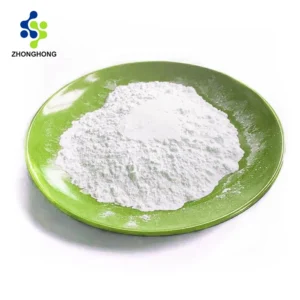
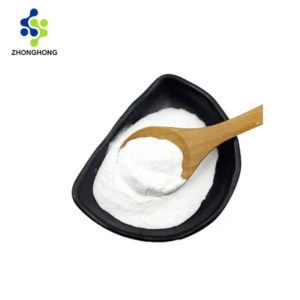
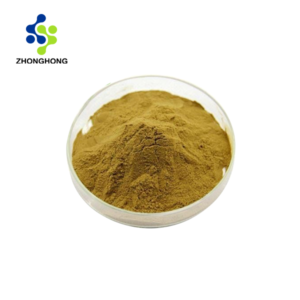
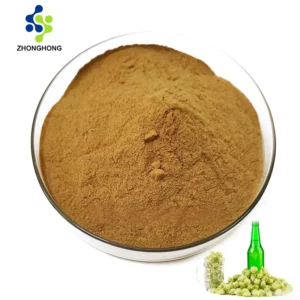
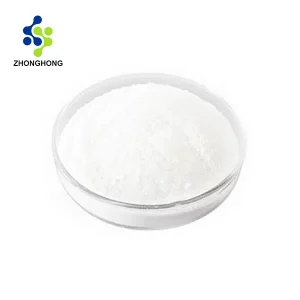
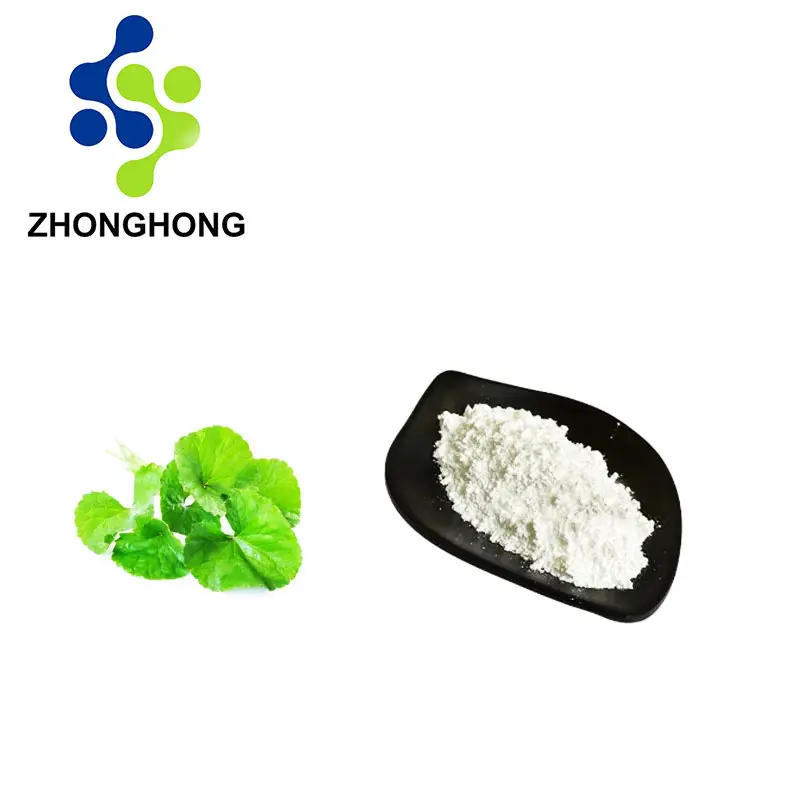
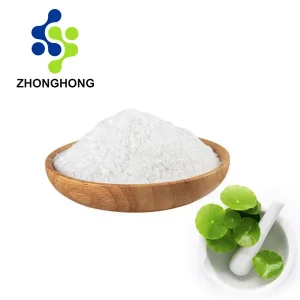
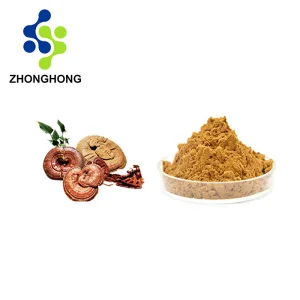
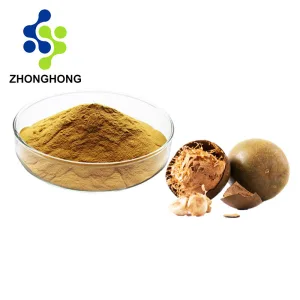
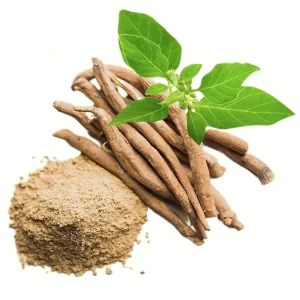
Reviews
There are no reviews yet.